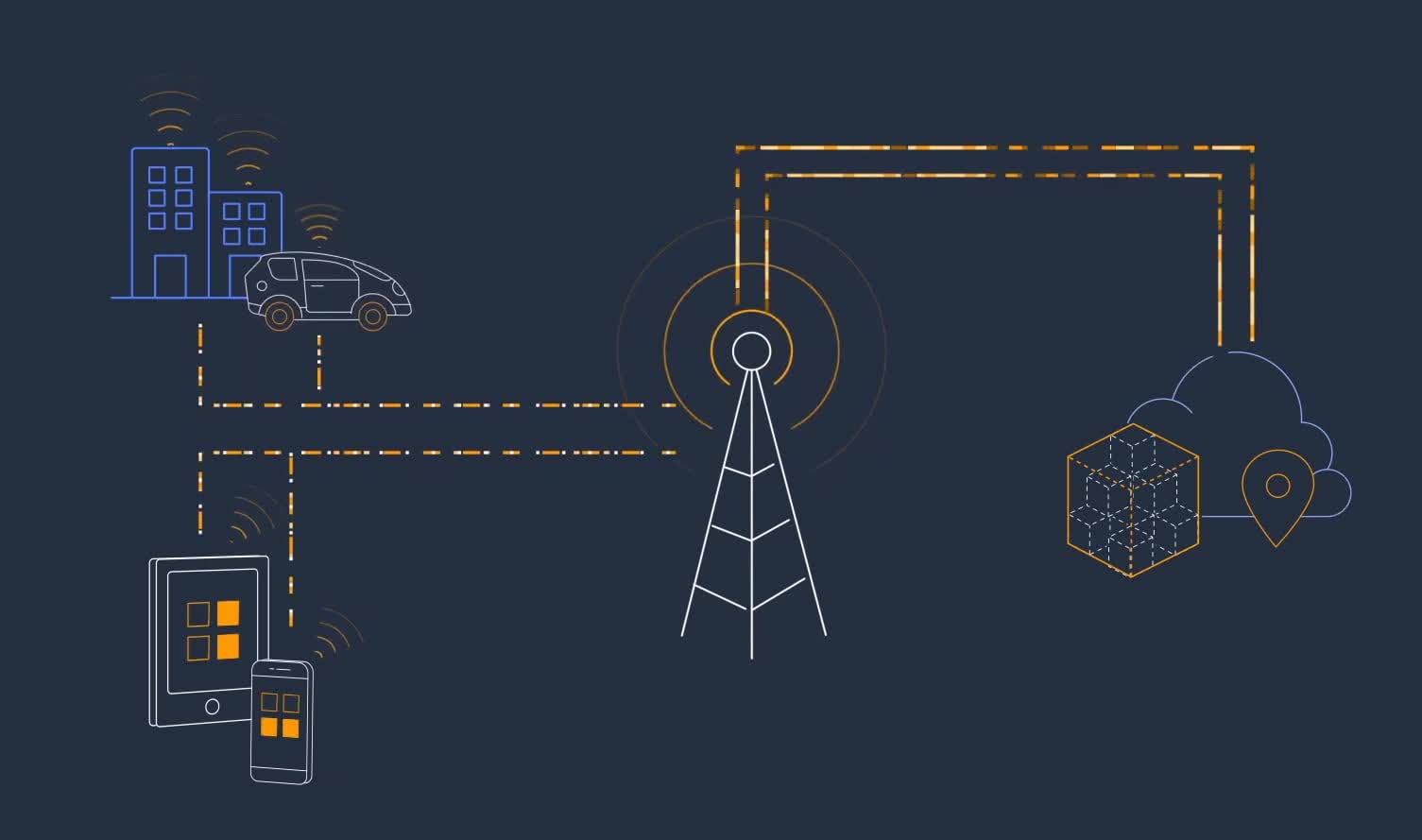Editor's take: If you've been following the big trends in the tech industry, you've undoubtedly heard a lot about both private 5G networks and edge computing. As exciting as these technologies may be, the truth is that most of the discussion about them has been more theoretical than practical. Despite all the chatter, there simply aren't that many real-world implementations of either of them, and even fewer that use the two together. That's why this announcement is a big deal.
Verizon and Amazon Web Services (AWS) have a real-world customer, in the form of Corning's fiber optic cable factory, for their Private 5G Mobile Edge Compute (MEC) service with AWS Outposts. The combination of the two technologies brings the security, reliability, and speed of a private 5G network together with the increased performance and reduced latency that edge computing applications enable.
Corning is using the technology to power autonomous robots that can monitor real-time production, the movement of materials, and other processes that are designed to improve the consistency, quality, and efficiency of their demanding manufacturing methods. The company is working with Gestalt Robotics GmbH to run cloud-native "sensing as a service" applications on AWS Outpost hardware, leveraging all the standard Amazon Cloud APIs, tools and services.
It's also leveraging the extremely low latency response times of the private 5G network that Verizon Business has installed. The speed of the interactions between the systems can translate into practical benefits such as lowering the compute, and therefore battery, capacity needed on the autonomous mobile robots, which allows them to be smaller and less expensive. In addition, the distributed computing architecture leveraged for the application can reduce the response times, resulting in more reliable and predictable operation.
It's an interesting combination, which points to the future of a highly distributed computing world...
For Verizon and AWS, the deal builds on a relationship that they began last year with Amazon's Wavelength offering, which brings the equivalent of "mini" AWS data centers out to a wider variety of different geographical locations through the use of Verizon's wireless network.
It's an interesting combination, which points to the future of a highly distributed computing world that leverages both the reach of broadband wireless networks like 5G along with the computing power and scale of major cloud providers like AWS. The difference here, of course, is that Wavelength is a public cloud offering, whereas AWS Outposts are designed for private and hybrid cloud implementations.

Given the huge range of companies that continue to see the need to maintain some level of their own computing infrastructure, whether for security, regulatory, or just plain operational preference---as this Corning example illustrates---the range of opportunities for this type of private/hybrid cloud offering seems very broad.
One of the other interesting aspects of the combination of private 5G and edge computing is that they offer one of the cleanest paths for software modernization and enterprise transformation. The reason? No legacy.
As revolutionary a concept modern container-based, cloud-native software may be, the truth is, a tiny percentage of the world's software falls into this category. It's easy to forget how much older and difficult to upgrade software still runs within the walls of many organizations and how painful (and expensive) a process it is to refactor or rewrite all that software.
When you start to recall that many vendors have reported that they believe well under 20% of all enterprise workloads are running in public cloud environments – and don't forget, even a reasonable percentage of those were simply "lifted and shifted" into the cloud without any modernization efforts whatsoever – the reality of those challenges becomes more apparent. With both edge computing and private 5G, however, there are none of the legacy issues that have held other software modernization efforts back. As brand-new technologies, they are all entirely greenfield, so everything that gets deployed on them has to be built from scratch with modern principles in mind.
... I'd venture to say that once private 5G networks become more widely deployed, you'll be hard pressed to find an example where cloud-based edge computing applications aren't also being used.
Even beyond those characteristics, the combination of capabilities that private 5G networks and private cloud computing architectures can enable are game changing. To put it succinctly, they are an extremely powerful blend that will likely be seen as a blueprint for future networks and IT architectures across a wide range of industries and environments.
Together, they make the network smart, and that will likely be one of the defining values of 5G applications in business for many years to come. In fact, I'd venture to say that once private 5G networks become more widely deployed, you'll be hard pressed to find an example where cloud-based edge computing applications aren't also being used. The two really are perfectly suited to each other. From a strategic perspective, the potential implications of the links between these two technologies are likely to be profound for vendors looking to expand in one area without fully considering (or at least partnering) in the other. For companies to be successful in one or the other, they're going to have to put together offerings that either pre-integrate them or provide easily defined hooks to connect them.
Companies in all industries are eager to find solutions that can leverage the latest technologies, but only if these let them achieve solutions in a manner that suits their specific needs and, ideally, are well suited to the rapidly evolving future.
Compute-enabled, low latency, highly secure networks running modernly built and maintained software applications are clearly an essential part of the tech future that many forward-looking companies will be eager to explore. As a result, efforts like this Verizon and AWS combo that create these kinds of futuristic, yet practical opportunities will undoubtedly be replicated by a huge range of other tech vendors and a staggering array of new partnerships. It's definitely exciting to see them start to appear now, and it will be fascinating to watch how these new types of offerings continue to evolve.
No longer just the domain of public networks, the private 5G edge is clearly here to stay.
Bob O'Donnell is the founder and chief analyst of TECHnalysis Research, LLC a technology consulting firm that provides strategic consulting and market research services to the technology industry and professional financial community. You can follow him on Twitter @bobodtech.
Masthead image: Sigmund
